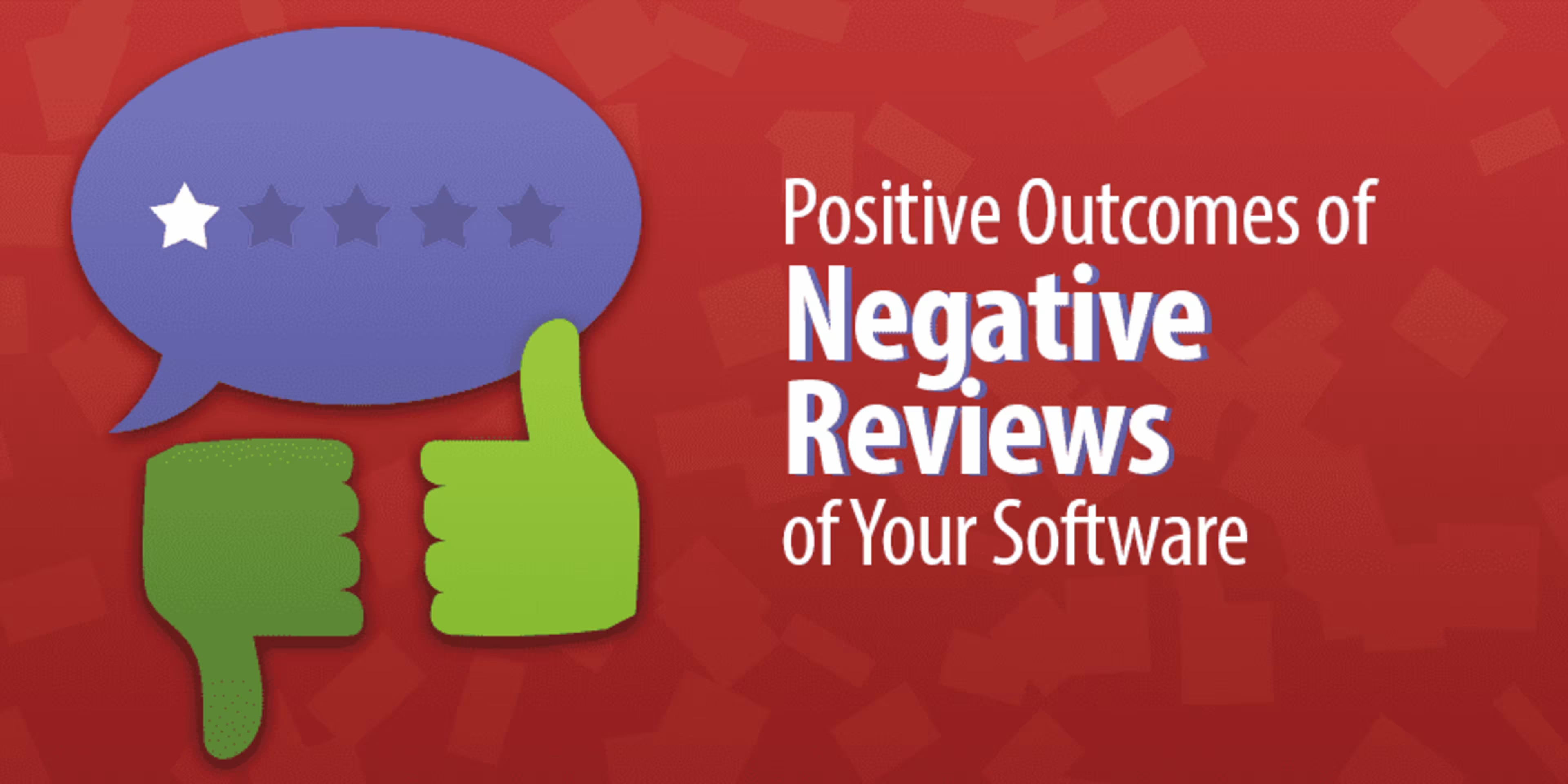It’s happened.
Your company’s top-selling B2B software product has started receiving a sequence of negative online reviews. Gradually, word of this trend has permeated the company.
Your marketing team huddles up to discuss how this might impact their lead generation efforts.
Your sales team worries that their pipeline might begin to deteriorate.
Your executive team anxiously discusses next steps for handling this development with one major question in mind:
“How can we get these reviews taken down?”

Generally, negative reviews are not ideal, but they don’t have to be a death sentence either. In fact, there are often positive takeaways from receiving a legitimate negative review.
Here are a few points to consider, should a negative review or two befall your company.
1. Your product wasn’t a good fit – and that’s okay!
There aren’t many products that can serve all customers in the B2B software world. Buyer needs, sizes, and organizational structures lie on a broad spectrum, which creates the need for a diverse array of software offerings across every industry. Empowered and enlightened is the company that knows their target market and understands how their product serves that market.
A negative review from a certain type of customer can help predict how similar types of customers might not see success with your product. Such insight will inform your digital marketing campaigns, save your sales team from the added effort of pursuing ineffective leads, and spare your delivery team from a potentially brutal onboarding processes.
Of course, a perfect fit for your product still might write a negative review. In that case, your team’s openness to criticism, and willingness to use that criticism as fuel for product innovation, could end up improving your software.
2. Negative reviews make positive reviews look authentic
By displaying all reviews, positive or negative, your company shows that it has nothing to hide. One study from review giant Reevoo analyzed 2.5 million reviews and found that 68% of consumers trust reviews more if there’s a mix of good and bad. And from our own research, we found that only 18% of users said negative reviews made the product seem less trustworthy. The average buyer understands that no company, or product, has a perfect track record. Even the most profitable companies have their share of snafus!
When negative reviews comprise the minority of a company’s review base, they actually help draw attention to a company’s positive reviews. By sheer juxtaposition to criticism, positive reviews will glow, and buyers will assume that those reviewers must have really enjoyed their experience with the product if they took the time to review it.
Moreover, negative reviews show that your company does not discard buyer feedback. Buyer perception of the customer experience can influence a company’s acquisition of those customers. If those prospects get the sense that strained relations, or the threat of legal action, could accompany any sort of public insubordination, they’ll be less likely to sign on in the first place.
3. Showing off impeccable customer service
Companies can shape perception of the customer experience by responding publically (and politely) to negative reviews. Always respond to negative reviews – they give you the perfect platform to showcase your customer service.
If the culpability lies with your company, then you can demonstrate timely and diligent attention to the matter. If the negative review was the result of user error, then you can direct that user to the training and resources needed to succeed.
In some cases, customers may even think more highly of a company after an issue has been corrected from their review. Michael McCollough and Sundar Bharadwaj coined this phenomenon the “Service Recovery Paradox” in a 1992 contribution to Marketing Theory and Applications (published by the University of Virginia). Ever since, the service recovery paradox has been a staple of marketing philosophy.
4. Negative reviews (should) drive continued review growth
Soliciting more reviews should be your knee-jerk reaction upon reception of a negative review. Why? Because an influx of new reviews will give your customers a complete picture of how others regard your product.
Remember that Reevoo study from earlier? The same study correlates 50+ online reviews to a 5% increase in click-to-lead conversion rate and an 18% lift in sales.
Buyers will gravitate towards products with more reviews, so don’t sweat a few negative ones. As Len Markidan conveys in a Groove blog post, one negative review out of ten might give a buyer pause, but ten negative reviews out of a hundred just isn’t that big of a deal.
To help you drive review growth, we have put together this list of easy ways here.
Your turn!
If you have any further thoughts to add, please share! Just don’t say anything bad about my article, or I’ll sue you for libel.